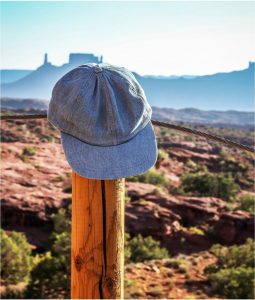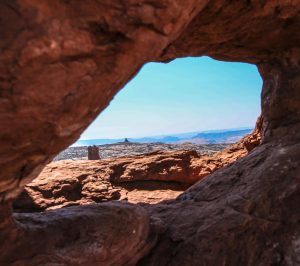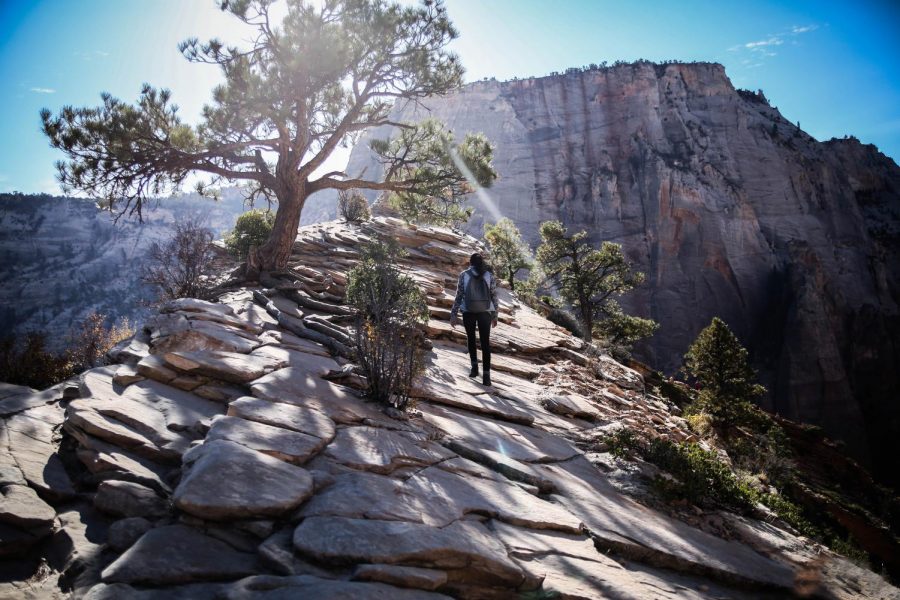Starr: Distant outdoor adventures can wait
April 22, 2020
In an effort to limit the spread of COVID-19, government officials have pushed to close national parks and place increasing limitations on public land. While some may see these actions as too severe, official public land restrictions, for the time being, are in the best interest of community health. Responsible recreation and physical activity near our immediate homes is a better approach to maintaining well-being than attempting to socially distance on public land in faraway locations.
The National Park Service has closed most facilities and individual parks are operating on a case-by-case basis to prevent the spread of the virus and maintain CDC guidelines. All of the national parks in Utah have temporarily closed, largely at the request of the neighboring towns and cities. Gov. Gary Herbert’s “stay home” directive and his recent announcement allow some state park visitation by county residents, which offers some flexibility for local recreation.

These actions from state and federal leaders are critical for public health, despite the economic impacts of closures — which is another challenge to address down the road. Prioritizing health and safety over the multibillion-dollar tourism industry is the right thing to do. Economies can bust and bounce back, but once human lives are lost, they are lost for good. There is no comparable stimulus that could bring back communities from devastating human losses. It is imperative to prioritize community health in the most literal sense.
Many communities who typically house tourists are ill-equipped to handle the spread of COVID-19, so the best route we can take is to stay put in our home communities. As lovely as it would be to quarantine among sandstone towers and the Colorado River, areas like Moab and Bluff have vocalized major concerns about visitation and tourism during this pandemic. Hospitals in rural communities are already strained in terms of capacity and it would be damaging to these communities for visitors to overwhelm the smaller facilities. With two ventilators and not a single intensive care room at the Moab Regional Hospital, it is unmistakable that parks should close and visitors should stay home.
Halt Risky Activities
Not only do we need to remain close to our homes, but we also need to put the brakes on riskier endeavors and activities. Injuries from irresponsible recreation and thoughtless activity on public lands will siphon limited resources and energy from those who put themselves on the frontlines in the medical community. While our doctors, nurses, technicians and other brave medical personnel are caring for COVID-19 hospitalizations, taking a more cautious style of recreating is the very least we can do. Health care workers are putting their own health and lives at risk — adrenalin rushes from slick rock and base jumping can wait.

Completely disconnecting from the outdoors is not the best course of action either. There are many low-risk activities to appreciate in the sunshine and fresh air. Visiting parks close to your home and maintaining a strategy for avoiding crowded open space may not be your ideal form of outdoor recreation, but it is the needed caution and responsibility required of us during this time. A road trip to Bryce Canyon can wait until the spread and impact of the virus have tapered. There is no good reason for long-distance trips to public lands as they require pit stops in far-off, neighboring communities who are most likely ill-equipped for the effects of mass visitation during a pandemic.
There is no doubt that getting outdoors and staying physically active can help maintain a high quality of life. Many studies have found that exercise can make people “more resistant to the emotional effects of acute stress,” which is just what we need during this worrying public health crisis. There are nearby opportunities to keep your mind and body healthy, and we all should be working in daily absorption of vitamin D to maintain our physical and mental well-being. The positive benefits of moving your body do not have to be brought to a complete standstill because of COVID-19. There are plenty of avenues for outdoor recreation and physical activity that do not jeopardize other communities and medical personnel.
Editor’s note: Signs and symptoms of COVID-19 include fever, dry cough, tiredness and shortness of breath. These symptoms are believed to occur between two and 14 days after a person is exposed to the disease. If you have these symptoms and have recently come into contact with a person who is known to have COVID-19, or if you have recently traveled to an area with community spread of the disease, you should call your doctor. Areas with community spread of COVID-19 are believed to include China, South Korea, Italy, Iran and Seattle. If you do not have a doctor who you visit regularly, please call the Utah Coronavirus Information Line at 1-800-456-7707 or the University of Utah Health hotline at 801-587-0712. Do not go to a healthcare facility without first making arrangements to do so.








